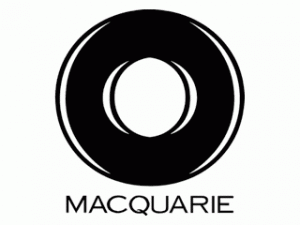 When it comes to simply making stuff up, nobody in Utah can top the Utah Taxpayers Association. The latest effort, “uNOpia”, is no exception, a mish-mash of arglebargle designed explicitly to rile up low-information voters into a frenzy (you know, like they did in Orem last year). The arguments are about as smart as a sack of hammers and so very, very easy to pick apart.
When it comes to simply making stuff up, nobody in Utah can top the Utah Taxpayers Association. The latest effort, “uNOpia”, is no exception, a mish-mash of arglebargle designed explicitly to rile up low-information voters into a frenzy (you know, like they did in Orem last year). The arguments are about as smart as a sack of hammers and so very, very easy to pick apart.
- Myth: The Macquarie deal is a $1.8B tax increase.
- Fact: The Macquarie deal has an estimated cost of no more than $1,173.6M. The only way it comes up as $1.8B is if you add in inflation. Even so, none of the UTA’s figures factor in the estimated $1-1.5B in revenues to offset the cost, revenues that, shockingly, will also rise with inflation. The real cost of the deal is around $6.22/mo per residence after paying the existing bonds, a far cry from the no more than $20/mo per residence the city will be charged and less than selling the network.
- Myth: You have to pay for the Macquarie deal even if you can’t afford it.
- Fact: The deal includes a built-in waiver for the indigent. It’s right there in the Milestone One document.
- Myth: UTOPIA will cut off your water if you don’t pay the utility fee.
- Fact: Centerville bundles all utility fees and pays them in a specific order in the event of an underpayment. Right now, water is the last to be paid. The city council can (and probably will) change that. No other UTOPIA city has this kind of structure, and UTOPIA itself has zero power or say-so in this arrangement.
- Myth: Elected officials have no say in UTOPIA if they accept the Macquarie deal.
- Fact: The UTOPIA and UIA boards will continue to operate as they have been and seats will be filled by the cities. Seats have historically gone to mayors, city council members, or executive staff (city manager, economic development, etc). None of this changes, and Macquarie will be bound to honor all contractual obligations of the deal.
- Myth: The market has a demonstrated record of providing all the bandwidth people are willing to pay for.
- Fact: The telecom sector has had the absolute worst customer satisfaction ratings of any industry on the American Consumer Satisfaction Index with Comcast as a perennial bottom-feeder and two-time recipient of the Consumerist Worst Company In America “award”. Surveys constantly show that Americans are unhappy with both the speed of their broadband connection and its price, and all evidence points to a dearth of competition in the broadband market.
- Myth: Utah law prohibits the utility fee.
- Fact: It was very clearly settled during the SB190 debate that the cities absolutely may institute this kind of utility fee. This is part of why the bill was killed before it came to a floor vote. In fact, The Utah Taxpayers Association gave a favorable recommendation to the exact same kind of utility fee in Provo to pay for iProvo.
- Myth: Large tech companies don’t locate in UTOPIA cities or use UTOPIA fiber.
- Fact: Mozy uses UTOPIA fiber and is part of EMC, one of the largest tech companies in the world. (Full disclosure: I work for RSA Security, an EMC subsidiary. They do not endorse my efforts here.) Overstock is dropping $100M on building a new Midvale campus. Symantec relocated its PGP acquisition from Draper to Lindon, a UTOPIA city. Tell me again how large tech companies don’t pick UTOPIA cities.
- Myth: UTOPIA causes tax increases.
- Fact: Non-UTOPIA cities raised taxes around the same time, and many UTOPIA cities did not raise taxes. There’s a much stronger correlation between tax increases and cities who bet a little too heavily on sales tax revenues from large retail establishments.
Really, their diatribe just goes on and on like that. A lot of it is basic fact-checking stuff that’s flat-out wrong, but they know those kinds of statements will rile people up and get them too angry to consider the real facts.
The best thing you can do right now is to make sure you show up at city council meetings, let your elected officials know you support the deal, and make sure you counter any of the flat-out false talking points the opposition will be trotting out time and time again. We’re really close to having this thing in the bag, and we can’t let up until the ink dries on the final agreement.







